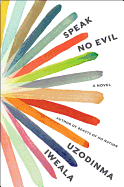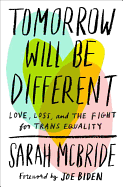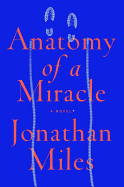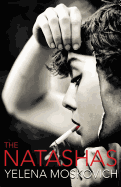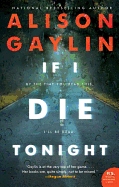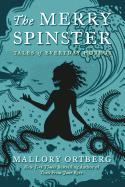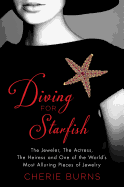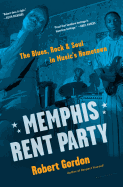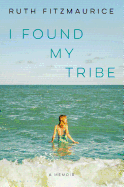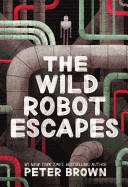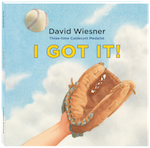Week of Tuesday, April 3, 2018
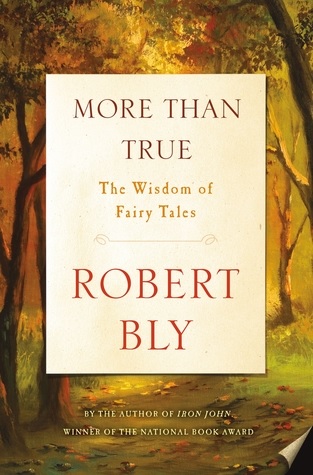 If you've watched any films lately, you'll know fairy tales still pervade much of our popular media, and as National Book Award winner Robert Bly points out in More Than True: The Wisdom of Fairy Tales (Holt, $27), our psyche as well. In his introduction, Bly explains that he and his wife, Ruth, share storytelling and reflections as "gifts that help both of us understand the craziness of our lives." His analysis of the six stories in this collection is personal and often attended by pieces of his own or an admired poet's verse. These story characters are reflections of what's inside each of us, and the struggles are often inside as well. In the Frog Prince tale, Bly explains that the princess's deal with the frog--who dives down to retrieve her golden ball if she promises companionship--is symbolic of seeking one's potential through one's instinct, which leads to "sometimes the swampy dark side, the ugly frog side, which could bring the ball back but will insist on something in return." He then draws allusions to Egyptian mythology, Hindu literature and quotes Rilke. Bly's story analysis reflects his adherence to poetics and Jungian self-analysis, so rather than finding vigorous scholarly references, you'll meet personal tales and inspirational verse along the way.
If you've watched any films lately, you'll know fairy tales still pervade much of our popular media, and as National Book Award winner Robert Bly points out in More Than True: The Wisdom of Fairy Tales (Holt, $27), our psyche as well. In his introduction, Bly explains that he and his wife, Ruth, share storytelling and reflections as "gifts that help both of us understand the craziness of our lives." His analysis of the six stories in this collection is personal and often attended by pieces of his own or an admired poet's verse. These story characters are reflections of what's inside each of us, and the struggles are often inside as well. In the Frog Prince tale, Bly explains that the princess's deal with the frog--who dives down to retrieve her golden ball if she promises companionship--is symbolic of seeking one's potential through one's instinct, which leads to "sometimes the swampy dark side, the ugly frog side, which could bring the ball back but will insist on something in return." He then draws allusions to Egyptian mythology, Hindu literature and quotes Rilke. Bly's story analysis reflects his adherence to poetics and Jungian self-analysis, so rather than finding vigorous scholarly references, you'll meet personal tales and inspirational verse along the way. 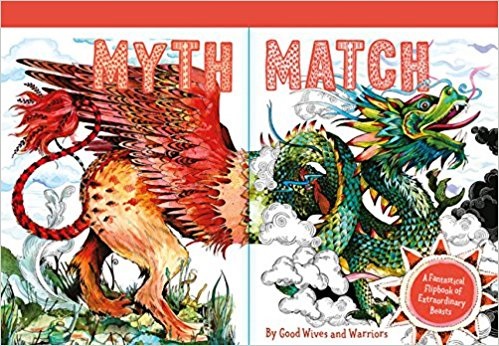 For your own personal mythological meditational journey, turn any two pages in Myth Match: A Fantastical Flipbook of Extraordinary Beasts (Laurence King, $17.99) and see where your cards point you. This sensationally illustrated flipbook by Good Wives and Warriors (Becky Bolton and Louise Chappell) splits a few dozen mythological creatures, from dragons to the hippo-headed Egyptian river goddess, Taweret, so they can be reassembled by chance. Mixing and matching the panels results in hundreds of surprising fantastical creations like the Grif-Guari, a monster with a cycloptic sloth head and the body of a lion that can fly "and is both ferocious and terribly smelly." Make new stories for your new discoveries, truth not required.
For your own personal mythological meditational journey, turn any two pages in Myth Match: A Fantastical Flipbook of Extraordinary Beasts (Laurence King, $17.99) and see where your cards point you. This sensationally illustrated flipbook by Good Wives and Warriors (Becky Bolton and Louise Chappell) splits a few dozen mythological creatures, from dragons to the hippo-headed Egyptian river goddess, Taweret, so they can be reassembled by chance. Mixing and matching the panels results in hundreds of surprising fantastical creations like the Grif-Guari, a monster with a cycloptic sloth head and the body of a lion that can fly "and is both ferocious and terribly smelly." Make new stories for your new discoveries, truth not required.
Speak No Evil
by Uzodinma Iweala
Uzodinma Iweala, author of the critically acclaimed Beasts of No Nation (made into a Netflix film), has written another brief but powerful novel, Speak No Evil. It focuses on two wealthy teen friends from different backgrounds in Washington, D.C.
Niru and Meredith are best friends who are both on the track team at an exclusive private school. Niru is the school's track star, and has already been accepted to Harvard to pursue a medical degree. Meredith is also an excellent runner and a good student, but she is worried that she hasn't yet heard back from Harvard. Both teens struggle with expectations set by their high-achieving parents to be the best, to follow the paths set for them and to fit within the cultural norms of their class.
Niru is hiding a secret, though: he has begun to realize that he's gay. His Nigerian immigrant parents are deeply religious and traditional, and being gay definitely does not fit into their aspirations for him. He finally confesses his secret to Meredith, and she encourages him to follow and not deny his true nature. Afterward, a series of incidents eventually leads to tragedy, amid Niru's immense struggle between his nature and his parents' beliefs.
The story is told from both friends' perspectives and touches on issues of tolerance, immigration, religion and violence. This succinct and potent novel explores the gut-wrenching struggle of defining yourself against the expectations of family and society. --Suzan L. Jackson, freelance writer and author of Book By Book blog
Discover: The powerful, heartbreaking story of a gay teen and his best friend, both struggling with the expectations of their families and society.
Anatomy of a Miracle
by Jonathan Miles
Cameron Harris, the protagonist of Jonathan Miles's third novel (after Dear American Airlines and Want Not), is in need of a miracle. And Anatomy of a Miracle is the funny, clever, moving story of this Biloxi, Miss., vet who returns from Afghanistan paralyzed from the waist down.
On a trip to the Biz-E-Bee convenience store for cigarettes and beer under the watchful eye of his mouthy sister, Tanya, Cameron's four years in a wheelchair come to an abrupt end when a surge from within propels him upright and walking. Told in a long-journalism format, Anatomy of a Miracle reconstructs this inexplicable medical event from the before to the more bizarre after. It is a remarkable combination of medical mystery, satire and war story.
An odd place for a miracle, the rundown Mississippi Gulf resort town of Biloxi "doesn't mind the smell of fish guts." When word of Cameron's recovery spreads, the town is swarmed with religious kooks and pilgrims. While Miles can be canny and hilarious about the absurdities of all this miracle whoop-de-do, he also steps back to explore what it might mean if one's life were suddenly changed from hopeless dependency to the freedom to be "normal" again. Although he gets a miracle he never expected, Cameron finds that a return to normalcy is not all it's cracked up to be. After the laughs subside, Anatomy of a Miracle leaves one pondering all the "what ifs" in life. --Bruce Jacobs, founding partner, Watermark Books & Cafe, Wichita, Kan.
Discover: In Jonathan Miles's third novel, a wheelchair-bound Afghan War vet stands and walks--only to find that this "miracle" has its downsides.
The Natashas
by Yelena Moskovich
In The Natashas, two seemingly disparate performers fall down a rabbit hole of sights and sounds that spotlight society's obsession with poisonous sexuality. César, an ambitious and talented Mexican actor, gets his big break by playing a serial killer, but his fascination with the killer's character grows dangerous. Meanwhile, the beautiful and lonely jazz singer Béatrice is captivated by a seductive, enigmatic woman named Polina, who may or may not exist completely within Béatrice's own mind. Reigning over them are the Natashas, a collection of sexually objectified mystery women who appear as both angels of meaning and harbingers of punishment.
Yelena Moskovich's debut novel reads like a montage of Kafka-esque visuals that both hypnotize and horrify their audience. While the plot rejects classic coherence, the atmosphere and tone vibrate in a reader's mind long after the story has ended. The novel isn't a detective story, per se, but the haunting images and pitch-perfect reverberations suggest a twisted noir fantasy that both unsettles and challenges the reader. The novel's most spellbinding moments, however, aren't the depictions of extravagant lust or garish physicality, but the unexpected sweetness that simple intimacy can have: for instance, when Béatrice's sister would "climb into her bed and pull her in close." Like a singer's "do-bee-do-bee-do" melody, these gentle notes soar above the piece's pointed screech. --Alice Martin, freelance writer and editor
Discover: The Natashas is nightmarish assemblage that uses David Lynch's aesthetics and Angela Carter's thematics to capture a terrifyingly real portrait of violent sexuality.
Mystery & Thriller
If I Die Tonight
by Alison Gaylin
"By the time you read this, I'll be dead," writes teenager Wade Reed on his mom's Facebook page at the start of Alison Gaylin's If I Die Tonight. Wade continues, apologizing to his mom and his younger brother: he never meant to hurt them but at 17, he believes he's already lived too long. The post says Wade is in an undisclosed location, and the pills he swallowed have started taking effect. No one would find him in time.
Cut to five days earlier. A kid at Wade's school is killed in a hit-and-run on a rainy night, while trying to help a woman being carjacked. The woman turns out to be faded pop star Aimee En, and the dead teen, Liam Miller, is declared a hero, resulting in added publicity and pressure for the carjacker to be found. As the story leads up to Wade's Facebook post, his brother Connor remembers Wade sneaking into Connor's room, dripping wet, late on the night of the crime. Then Wade asks him to dispose of a bag while making Connor promise not to look inside or tell anyone about it. Is Wade the carjacker and Liam's accidental killer?
With alternating viewpoints, Gaylin weaves a story that's gripping on multiple levels. She keeps readers on the hook with the mystery surrounding Liam's death, but also explores timely issues such as bullying and persecution in the court of public opinion. Each character is complex and achingly human, as real as people you know, in person or on Facebook. --Elyse Dinh-McCrillis, blogger at Pop Culture Nerd
Discover: After a teenager dies while reportedly trying to help a carjacking victim, a schoolmate is suspected of the crime.
Science Fiction & Fantasy
The Merry Spinster: Tales of Everyday Horror
by Mallory Ortberg
The 11 stories in The Merry Spinster: Tales of Everyday Horror reimagine classic bedtime tales in new (and sometimes twisted) ways. "Beauty and the Beast" is the clear inspiration for the title story, while threads of "The Little Mermaid" appear in "The Daughter Cells," and anthropomorphic characters from The Wind in the Willows and Frog and Toad Are Friends appear in "Some of Us Had Been Threatening Our Friend Mr. Toad" and "Good Fences Make Good Neighbors."
These are not classic adaptations and retellings, however eerily familiar some parts of the stories may seem. Mallory Ortberg, co-founder of The Toast and author of Texts from Jane Eyre, combines these well-known tales with lesser-known stories, myths, prayers and other time-worn narratives in ways that are at once bizarre and delightful, horrific and compelling. Imbued with Ortberg's characteristic dry humor and sense of mischief managed, each piece in The Merry Spinster bends and twists to grapple with big questions: Do we own ourselves, or are we obligated to share ourselves with others? If the latter, what does that look like? How important is gender in our understanding of the stories we read? How do we force our expectations on the roles we see others play: spouse, lover, partner, parent, child, sibling, friend? The Merry Spinster is part of the great tradition of storytelling, updating classics in sometimes startling, always subversive ways that will make readers rethink how--and why--some stories are told again and again. --Kerry McHugh, blogger at Entomology of a Bookworm
Discover: The co-founder of The Toast updates 11 classic fairy tales in ways that are both disturbing and thought-provoking.
Food & Wine
How to Taste: The Curious Cook's Handbook to Seasoning and Balance, from Umami to Acid and Beyond
by Becky Selengut
In How to Taste, chef and cooking teacher Becky Selengut offers a guide to balancing flavors and transforming good--and even bad--food to great.
"If you've ever made a disaster of a dinner, been mystified by what the term 'season to taste' means, and had no bloody idea what went sideways," Selengut writes, "this book is for you." She walks the reader through the ways flavors interact and how to adjust them, and each of the 12 chapters covers one element of taste, including salt, sweet, aromatics, bite and texture. She explains how to tell when a dish needs something more and, miraculously, how to fix food that's overly salted, spiced, fatty or cloying. Every chapter concludes with an experiment to highlight her points in a real kitchen, resulting in practical understanding without wasting time or food--you're left with a carrot salad, toasted fennel or lightly sweetened cup of coffee. She also includes additional recipes and video links to see her methods in practice.
Selengut's irreverent and humorous voice makes How to Taste a joy to read. She explains food science without being esoteric, and recognizes that flavor is influenced by the eater's culture, memory, age, genetics and other factors. She encourages readers to taste intentionally and trust their senses in order to be in the moment, enjoy food more and make cooking less of a chore.
Novices and accomplished home cooks alike will find something helpful, perhaps game-changing, in How to Taste. Read it all the way through, then keep it in your kitchen as a quick reference. --Katy Hershberger, freelance writer, bookseller and publicist
Discover: An approachable, fun and highly informative guide to crafting dishes like a chef.
Biography & Memoir
Tomorrow Will Be Different: Love, Loss, and the Fight for Trans Equality
by Sarah McBride
Human Rights Campaign national press secretary Sarah McBride always knew she was female, but because of the physical body she was born in, the rest of the world considered her male. In college she made the decision to come out; she could no longer live as someone she wasn't. McBride shared this life-altering news with her family and close friends, then posted it to Facebook.
Composing her note that day, McBride had no idea how much her decision and her subsequent activism would change the face of the transgender community in the United States. She went on to inform members of the Obama administration as an intern in the White House, affect legislation in her home state of Delaware and beyond, and became the first transgender person to speak at a national political convention. Tomorrow Will Be Different is her inspiring story of realizing her true self and fighting for the freedom of others to do the same.
McBride is candid about her fears and reservations, her triumphs and failures, her loves and losses, all of which drives home her humanity. She points out how her white, middle-class advantages, coupled with the strong support of her family and friends, limit her perspective. But her insights into the legal, political and social battles for transgender equality offer readers a vital, albeit often heartbreaking, glimpse into a community that desperately needs to be understood better. Authentic, persuasive and sincere, McBride's work ensures tomorrow will be different for everyone who reads it. --Jen Forbus, freelancer
Discover: A young, transgender activist shares her story of coming out, living as her true self and fighting for the rights of others to do the same.
Diving for Starfish: The Jeweler, the Actress, the Heiress and One of the World's Most Alluring Pieces of Jewelry
by Cherie Burns
Journalist Cherie Burns first laid eyes on the Boivin starfish at a book launch for her 2011 biography of the American heiress Millicent Rogers, hosted by the Fifth Avenue jeweler Verdura. Burns was shown a palm-size ruby-and-amethyst starfish pin and told that it had been owned by Rogers herself. When Burns returned to Verdura the next day to have another gander, she learned that her party's "honored guest" had already been whisked away by a London dealer.
Burns's enchantment with the piece and interest in its provenance leads to a multiyear quest that takes her to London and Paris, where the house of Boivin designed the starfish in the 1930s. She knows that the now-shuttered house made at least three starfish. Are there more? Where is the Rogers starfish now? And what's become of the one owned by the golden-age-of-Hollywood actress Claudette Colbert? Answers are closely guarded by what Burns, a neophyte to the jewelry world, comes to understand is "a business whose distinguishing feature is secrecy."
Burns has a jeweler's eye for detail when it comes to describing the eccentric characters who animate her detective story. To enjoy Diving for Starfish: The Jeweler, the Actress, the Heiress and One of the World's Most Alluring Pieces of Jewelry, one needn't have an interest in gems--just an appreciation for fine design and strongly held beliefs. Says one typically opinionated industry insider: "Boivin was a designer with a sense of design and good craftsmen. Cartier made junk." --Nell Beram, freelance writer and author
Discover: Journalist Cherie Burns goes on a multiyear quest to learn the provenance of a mysterious piece of jewelry.
Memphis Rent Party: The Blues, Rock & Soul in Music's Hometown
by Robert Gordon
Journalist and filmmaker Robert Gordon has documented Memphis for decades. Born and raised there, he was submerged in the music scene as a kid, eventually devoting himself to tracking down lost stories of the town where rock-and-roll was born. Memphis Rent Party collects many of those stories, adding anecdotes and introductions to previously published work, along with pieces that haven't seen the light of day. In totality, the book is a sprawling look at Memphis old and new, examining the birth of rock and rockabilly, and the economy of music in the 20th and 21st centuries.
Using his own journey as a guide, Gordon weaves his way through 75 years of music, from the birth of Jerry Lee Lewis to the death of Alex Chilton (the musical powerhouse behind Big Star) in 2010. The only constants throughout these pieces are Gordon and the city of Memphis itself. Memphis Rent Party depicts pipe and drum hootenannies out in the middle of nowhere, avant-garde proto-punk shows and everything in between, showing how so much of modern music was influenced, if not downright born, in Tennessee.
Since each piece is short (most were originally intended for newspapers and magazines), readers won't find the kind of depth one sees in a biography. But as a whole, the works here form a larger tapestry, where one can easily glean the sheer volume of talent and creativity that moved through Memphis's streets--and still does, Gordon would likely say. --Noah Cruickshank, adult engagement manager, the Field Museum, Chicago, Ill.
Discover: Memphis Rent Party collects works by journalist Robert Gordon that showcase the musical history and impact of Memphis, Tenn.
I Found My Tribe
by Ruth Fitzmaurice
Ruth Fitzmaurice's life changed drastically when her husband, Simon, was diagnosed with motor neurone disease (MND) in his early 30s. In the years since, Ruth has kept her sanity by chasing her five rambunctious children, wrangling a never-ending stream of nurses and caregivers, and jumping into the frigid Irish Sea with her two dear friends. Simon chronicled his experience of living with MND in his memoir, It's Not Yet Dark (2017). Now Ruth tells her own story of grief, motherhood and swimming in I Found My Tribe.
It unfolds in brief, luminous chapters: like the sea glass her son Arden gathers on the beach, they are fragmented, sometimes jagged, often lovely. And like her beloved waves, Ruth's narrative shifts back and forth: meeting Simon, childhood memories, early marriage, motherhood, any number of ordinary days. Interwoven is the story of the Tragic Wives' Swimming Club, Ruth's name for herself and her friends Michelle and Aifric. Nearly every day, they dive into the freezing water at Greystones, and Ruth writes about the fear and exhilaration, the way swimming gives her a brief flash of freedom from her life, and then the courage to face it.
"This is my cove and the sea is my salvation," Ruth declares. Later she admits, "The fear is still with me, but these days I jump anyway." I Found My Tribe is a slim, powerful testament to jumping in--whether to the sea or to life's crashing waves--and an urgent call to live with bravery and love. --Katie Noah Gibson, blogger at Cakes, Tea and Dreams
Discover: Ruth Fitzmaurice writes about grief, motherhood and swimming in the Irish Sea in a fragmented, luminous memoir.
Children's & Young Adult
The Wild Robot Escapes
by Peter Brown
In Peter Brown's sequel to his bestselling middle-grade novel, The Wild Robot, Roz is delivered to Mr. Shareef, a recent widower and father of two, to help him on his dairy farm. Hilltop Farm's animals first see Roz as "a monster," but she quickly connects with them by speaking "to the cows in the language of the animals." She bonds with the farm animals and the Shareef children, but desperately misses her adopted son, a goose named Brightbill. After many months and much help from her friends, Roz is finally reunited with Brightbill, and the two set out to return home. As she runs away from the farm, though, she feels, not free, but "something more like fear" that she'll be captured and destroyed, or that her son will be hurt. Indeed, both Roz and Brightbill are not free--in order to have any chance of making it home, they will have to escape a society that doesn't understand them.
The Wild Robot Escapes has a broad appeal beyond the typical middle-grade audience. Brown's simple prose and illustrations, in combination with the story's complex themes, make The Wild Robot Escapes both accessible and thought-provoking. Roz observes and explores her world with open curiosity, and many of her conversations pose interesting questions to the reader. Black-and-white illustrations, drawn in Brown's expressive style, add visual context that will attract and aid any reader who's still building the ability to decode text. The book also works beautifully as a read-aloud, thanks to ultra-short chapters and third-person narration that often addresses the reader directly. For the sake of Roz's happiness, readers may hope this is her final adventure. Whether it is or isn't, Roz and her numerous families have given readers a book to mull over for many years. --Stephanie Anderson, assistant director of selection, BookOps
Discover: The sequel to Peter Brown's acclaimed The Wild Robot is a magical middle-grade mixture of prose and illustration about what it means to be free and what it means to belong.
Orphan Monster Spy
by Matt Killeen
Sarah and her mother's attempt to flee Nazi Germany fails, leaving Sarah alone near the Swiss border. "A Jew with no papers" being chased by the men who killed her mother, Sarah escapes onto the roof of a deserted warehouse. But she is not alone: someone is on the roof, "standing and watching" as if "looking for a rare bird." Although this man represents a threat, through a series of brave (and potentially stupid) actions, Sarah saves his life.
Captain Jeremy Floyd--a British spy--sees potential in Sarah. She is 15 years old, but her naturally small build and years of malnutrition have made her appear to be no older than 11; she is half-Jewish, but her Rapunzel-like "golden hair" and "pale blue" eyes make her appear Aryan; and she is adept at both "accent recognition" and fluid, fast-thinking lies. With her set of skills, Floyd believes Sarah could be the perfect spy for his current mission: to stop a Nazi scientist from developing a "bomb... with enough destructive power to flatten a city." Sarah enrolls at the Nationalist Socialist school that the scientist's daughter attends with the directive to befriend the girl and find the bomb.
Matt Killeen's debut work is captivating, the 400 pages flying by. Sarah's experiences are deeply upsetting and her growth hard-won, the thrilling spy heroics engaging yet always aware of the brutal framework in which they take place. Orphan Monster Spy features a teen girl surviving--and thriving--in situations much more dangerous and frightening than anything 007 experienced, and he never had to pretend to be "a good... little monster" to survive. --Siân Gaetano, children's and YA editor, Shelf Awareness
Discover: A 15-year-old half-Jewish girl works with a British spy to help take down the Nazis.
I Got It!
by David Wiesner
Three-time Caldecott Medal winner David Wiesner once again brings young audiences a hint of the extraordinary in his new almost-wordless picture book, I Got It!
A child, already wearing his baseball glove, peers nervously through the backstop at a group of kids organizing a pickup game. Hands behind his back, one foot self-consciously placed over the other, he clearly wants to play. He slowly approaches the small group organizing itself on the title page and asks to be included. In a series of three, graphic novel-like panels, an older boy gives our hopeful player a contemplative stare and sends him to the outfield where, against a backdrop of green trees and suburban homes, the boy gets ready to play.
The next thing the reader knows, the opposing team has hit a fly ball in the boy's direction. The page turn shows a close up of him against a blue sky with puffy, white clouds reaching... reaching... "I got it!"
Only he doesn't. The white-bordered illustration on the left-hand page flows seamlessly into the right, on which the boy is shown in a sea of white space, tripping over a large root. A small group of birds stands by as his hat flies off and he goes down, the ball soaring right over his glove. The next full-page spread depicts the boy on the ground, still reaching for the ball, his hat and one shoe lying next to him, his six teammates face-palming at his failure.
The next page turn again shows the boy, nervous face extremely focused as he reaches into the blue sky. Half of the ball is now in view, looking as if it is aiming directly for the center of his glove. Again, there is a seamless transition from the bordered, puffy-clouded real world into the boy's imagination: on the right-hand page, he is shown tripping over a root that looks like something from a Grimm fairytale. The knee-high root is gnarled and accompanied by other sinister-looking roots that are exploding out of the ground. The birds, which had seemed so innocent surrounding the first tripped-over root, now fly menacingly in the white space surrounding the boy. Another page turn to a full-page spread, and the boy has fallen directly into a tree, arms wrapped around it à la Wile E. Coyote.
Back and forth the reader goes, from the boy's real-time reach for the ball to his split-second imagination of the very worst scenario. As the others on his team also reach for the ball, he envisions it suddenly growing to the size of a blimp, looking as if it may crush him as it plunges to the ground. Next, he is shrinking--or his teammates are growing--until he is mouse-sized in relation to the other children. Clinging to the shorts of a teammate, he is propelled through the air as the kids run to catch the ball. He leaps from legs to heads, bounding from hat to hat as he tries desperately to catch it. He and the birds fly between hands and baseball gloves the size of cars as he reaches... reaches....
"I GOT IT!"
Back in the real world, the boy and his team celebrate while the opposing team's hitter laments the catch. Our protagonist has saved the day, and the final page shows him seated on the ground waiting for his turn at bat, smiling as he chats with his new friends.
I Got It! is a depiction of Wiesner's almost lifelong interest in "the idea of a lengthy mental fantasy happening in a very short time." Here, the boy runs through several upsetting fantasies in the few seconds it takes for him to catch the ball heading his way. "The most challenging part of this book," Wiesner said, "was [visually] differentiating the two worlds.... The real-world paintings are framed on three sides by a white border. When the boy reaches for the ball on a left-hand page, the white border and the white clouds in the sky on that page flow into the facing page, where his thoughts exist as isolated forms. It is the border/no border design that carries the reader between the two worlds."
Beyond the border/no border design, Wiesner wanted to heighten the difference between the realistic and imaginary worlds. He painted "the art in two different ways. The real world is done in opaque paints, with acrylic, gouache and watercolor.... The mental scenarios are done with watercolor." This gives the imagined scenes an almost ethereal effect--everything is a little bit softer, a little bit less defined. "When [the boy] ultimately takes control of his thoughts," Wiesner said, "the final mental image has all the other figures fading away."
As can be expected of any David Wiesner work, I Got It! is extremely creative and features bewitching art. Like Tuesday or Mr. Wuffles, the wordless nature of this book allows children (and adults) to experience and interpret the story in any number of ways, giving the gift of countless new rereads. I Got It! is an experience, and readers will surely love the ride. --Siân Gaetano


